2019 Hyundai NEXO Review

Driving the brand-new Hyundai NEXO is an utterly conventional experience even if under the skin it’s anything but a normal crossover.
In more ways than one, this hydrogen fuel-cell vehicle is the South Korean conglomerate’s most technologically advanced model, an automotive moonshot that generates its own electricity while emitting only water. And yet it behaves like any other modern utility vehicle.
The NEXO’s suspension smothers road imperfections almost to the point of being floaty, the drivetrain is endowed with ample torque, its acceleration is more than adequate, plus it offers plenty of space for both cargo and passengers.
Given the technology it’s loaded with, one might expect a bit more drama, a dash of weirdness for good measure, but the NEXO carries itself with such nonchalance the driving experience is almost forgettable, that is, until it’s time to get fuel or you think about what’s going on under the hood.
Mobile Power Station
Rather than running exclusively on stored electrons like an EV or through the combustion of fossil fuels, this Hyundai is totally alien in its operation, like something from the pages of a science-fiction novel. Greatly streamlining the operation, stored hydrogen is fed into the fuel-cell stack where it combines with oxygen in a process that produces electricity, water and a bit of heat. Conceptually simple, if astoundingly challenging in practice, the result of this advanced engineering is a vehicle propulsion system with zero harmful emissions. It can be greener than the Amazon rainforest during monsoon season, provided the hydrogen it runs on has been produced in a sustainable manner, of course. So clean is this vehicle, Hyundai even claims it purifies the air while running, filtering out harmful particulates.
FAST FACTS
| Engine: | Hydrogen fuel-cell powertrain |
| Transmission: | Single-speed reduction gear |
| Total Output: | 161 horsepower, 291 pound-feet of torque |
| Fuel Storage: | 41.4 gallons (156.6 liters) |
| Blue-Trim Range: | 380 miles (612 kilometers) |
| Limited-Trim Range: | 354 miles (570 kilometers) |
| Blue Trim U.S. Fuel Economy (MPGe): | 65 city, 58 highway, 61 combined |
| Limited Trim U.S. Fuel Economy (MPGe): | 59 city, 54 highway, 57 combined |
| U.S. As-Tested Price: | TBD |
The NEXO is designed to operate in all manner of weather conditions, from the roasting heat of Death Valley, California to frigid conditions found in Alaska’s North Slope. It should be able to handle temperatures exceeding 120 degrees Fahrenheit (49 Celsius) or even down to a bone-chilling -20 (-29), conditions that could devastate the performance and driving range of your typical electric vehicle.
A Big Step Forward
This vehicle is a technological leap, though it’s not the first time Hyundai’s experimented with hydrogen. They actually began investing in this technology way back in 1998, which led to the development of the Tucson FCEV, which blazed a trail for the NEXO to follow. It was the world’s first mass-produced fuel-cell-powered vehicle, offered in 18 markets.
But thanks to the relentless march of progress, the NEXO makes its forebear look like child’s play, besting it in nearly every area of measure. Built on a brand-new dedicated architecture, it’s lighter, has additional cargo capacity and a better-packaged powertrain. It’s also quieter, faster, more efficient and offers up to 40 percent greater driving range, which equates to an increase of 115 miles (185 kilometers).
With a storage capacity of 41.4 gallons (156.6 liters), the NEXO carries enough hydrogen to travel a maximum of 380 miles (612 kilometers), though curiously, the higher-end model delivers slightly less range, maxing out at 354 (570). Trouncing even the best EVs, this fuel-cell Hyundai can be refueled in as little as five minutes, just like a conventional petroleum-powered vehicle.
Helping contribute to that impressive range is an extremely slippery body. The NEXO’s coefficient of drag is just 0.32 thanks to design additions like front-wheel air curtains, hidden front windshield wipers, air tunnels on the D-pillars and even motorized door handles that retract at speed, just like on the Range Rover Velar.
Two trim levels will be offered, with Blue serving as the base model and Limited maxing things out. As for fuel economy, the latter is rated at 59 miles per gallon equivalent in city use, 54 on the highway and 57 MPGe combined. The former is slightly more economical on all three driving cycles.
Propelled by a permanent-magnet electric motor, the NEXO is graced with a rather modest 161 horsepower, though torque far exceeds that figure, maxing out at 291 pound-feet. Twist is fed through a single-gear transmission.
With a curb weight of just around two tons (3,990 pounds or 1,810 kilograms in Blue trim, 4,116 or 1,867 kg in Limited), the vehicle is far from the fastest thing on four wheels, taking an advertised 9.5 seconds to reach 60 miles (100 km/h) an hour from a standstill, doing the deed a full three seconds faster than the Tucson FCEV. Fortunately, thanks to all the torque it’s endowed with the NEXO feels much faster than that number would suggest, offering surprising punch, particularly off the line.
Luxury Trimmings
The NEXO’s exterior is boldly styled but still sensible. The design is not completely over the top like some of its fuel-cell-powered rivals like the Toyota Mirai or Honda Clarity, a theme that continues inside. The interior is extremely well done, constructed of fine materials and loaded with technology.
The front buckets are comfortable but also cozy thanks to the floating center-console bridge, which makes it feel as if you’re surrounded by the interior. Like the Porsche Panamera, this large horizontal surface is home to the climate controls, myriad other switches and even the push-button shifter, though all of these controls are of rather low contrast, making it difficult in certain lighting conditions to identify which switch controls what.
Ensuring the NEXO is as versatile as practically any other crossover, it offers just shy of 30 cubic feet (850 liters) of storage space behind the second-row seats. Fold them down and that figure nearly doubles, giving you plenty of room for hauling.
Furthering this tree-hugging vehicle’s green cred is the range of eco-friendly materials it’s constructed of. The exterior paint incorporates soybean oil, some of the fabric inside is woven of bamboo thread, there’s also bio-sourced carpeting and plastic made partially from sugar cane. Some 47 different components feature sustainable materials, helping reduce carbon emissions by 26 pounds during the vehicle’s manufacturing process.
Plenty of Tech
Keeping up with rivals, this fuel-cell Hyundai offers all the latest gadgets and amenities you’d expect and a couple you might not.
The audio and navigation system are displayed on a massive 12.3-inch touchscreen that’s bright and clear. It’s also housed in the same assembly as the digital instrument cluster. Apple CarPlay, Android Auto and even text-to-speech via Bluetooth are included, as is Qi wireless charging for easily keeping your mobile device of choice topped up with electrons.
In addition to the usual advanced driver aids like lane centering and automatic high-beams, the NEXO also features a Blind-Spot View Monitor, which dramatically improves your field of vision. When the turn signal is activated a video feed from either side of the vehicle is displayed on the instrument-cluster screen, a handy thing to be certain.
With Remote Smart Parking Assist, top-shelf Limited-trim NEXOs can automatically park themselves in either parallel or perpendicular spaces. This system is so advanced the driver doesn’t even have to be in the vehicle. He or she can control it by simply pressing a button on the key fob, which is ideal for super-tight spots. Limited models also feature 19-inch wheels, a sunroof, power liftgate as well as heated and cooled front seats.
The Infrastructure Issue
The NEXO is comfortable, spacious and a smooth-rider, its acceleration is even more than adequate, but as you may have guessed, there’s a major elephant in the room, a pachyderm in the parlor: Where do you get hydrogen?
There are only about 35-such fueling stations in the state of California, where the NEXO will go on sale before year’s end. A few more are scheduled to come online, but, obviously, this situation severely limits where the vehicle can be offered.
But every fire starts with a spark and this Hyundai could help start a fuel-cell revolution since it will eventually be sold in other zero-emission vehicle states including Vermont, Massachusetts and Oregon once, of course, fuel becomes available in these areas. The car has also exceeded expectations in South Korea and is projected to do well in Europe, too.
The Verdict: 2019 Hyundai NEXO Review
If you reside in The Golden State, you’ll be able to buy or lease a Hyundai NEXO in 2018 although pricing has yet to be announced.
Infrastructure issues aside, there’s really nothing to dislike about the NEXO, which is an entirely competent crossover that just happens to run on an uncommon fuel. It’s a huge advancement over the old Tucson FCEV and a far more practical offering than either the Mirai or Clarity, unquestionably its two biggest rivals.
Discuss this article on our Hyundai NEXO Forum
LOVE IT
- Drives like a normal crossover
- Comfortable accommodations
- Premium interior trimmings
- Tasteful styling
- Cargo space
LEAVE IT
- Ride a little too cushy
- Limited availability
- Pricey

Born and raised in metro Detroit, Craig was steeped in mechanics from childhood. He feels as much at home with a wrench or welding gun in his hand as he does behind the wheel or in front of a camera. Putting his Bachelor's Degree in Journalism to good use, he's always pumping out videos, reviews, and features for AutoGuide.com. When the workday is over, he can be found out driving his fully restored 1936 Ford V8 sedan. Craig has covered the automotive industry full time for more than 10 years and is a member of the Automotive Press Association (APA) and Midwest Automotive Media Association (MAMA).
More by Craig Cole



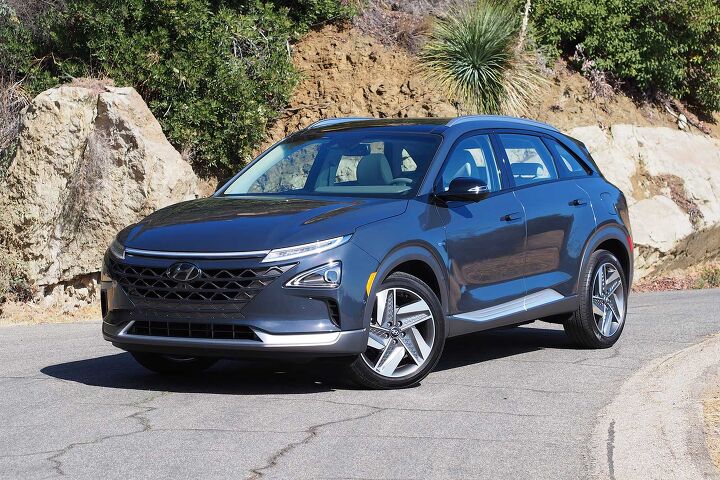






























































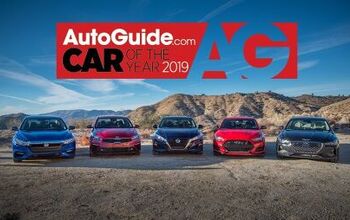




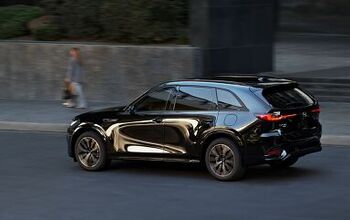
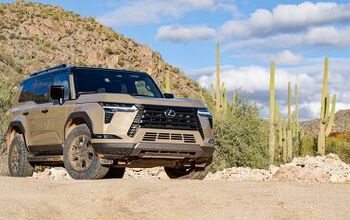



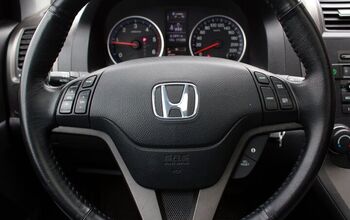
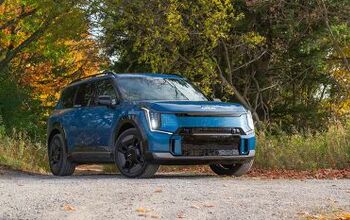
Comments
Join the conversation